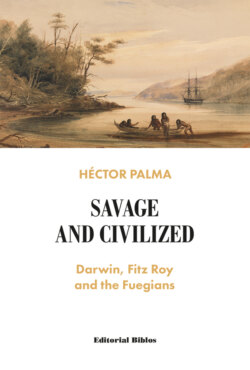Читать книгу Savages and civilized - Héctor Palma - Страница 5
На сайте Литреса книга снята с продажи.
CHAPTER 1
Background and Personages
ОглавлениеTierra del Fuego excited in me, has left an indelible impression on my mind. The sight of a naked savage in his native land is an event which can never be forgotten
—Charles Darwin, Autobiography
The European power expeditions to several lands of the world, with military, commercial, and also scientific objectives, as well as their explorers’ accounts, date back to the sixteenth century or even earlier. But it is not until the eighteenth century when more reliable journey diaries, according to a scientific criterion that included fauna, flora, geology, and human groups’ observations, were shaped. The accounts of those explorers were gradually moving from fabulous descriptions of beings and monsters in far and unknown lands to the enlightened and scientific spirit of the time. Famous epics such as the British James Cook’s (1728–1779), who, in 1768 started a series of journeys through Tahiti, New Zealand, the Antarctic, and New Caledonia; the French Louis-Antoine de Bougainville’s (1729–1811), and Jean-Francois de La Pérouse’s (1741–1788) are worth mentioning, as well as, a bit later, Alexander von Humboldt’s (1769–1859), the most famous and renowned explorer in Darwin’s time. In fact, Darwin, as revealed in his letters, felt both flattered and amazed when Humboldt expressed his desire to meet him and even more when, later, spoke highly of him.
Many of those explorers visited South America in general and the area of current Argentina in particular during the seventeenth, eighteenth and nineteenth centuries. Nicholas Mascardi (1625–1673) travelled the Southern Andes between 1662 and 1670. Another well-known explorer was Felix de Azara (1746–1821), who experienced various journeys between 1781 and 1801. As well as Alejandro Malaspina (1754–1810), who went along the Patagonian coastline in an expedition aimed to carry out oceanographic, geological, botanical, zoological, and climatological researches of the Spanish lands. According to both J. Babini (1986) and Darwin, the most important explorer of these lands was Alcides d’Orbigny (1802–1857), frequently quoted and also recognized by Darwin as the most important explorer after Humboldt. D’Orbigny went across South American countries from 1826 to 1833 and then published Voyage dans L’Amerique méridionale, which comprises geological, palaeontological, botanical, zoological, and anthropological information of Argentina.
